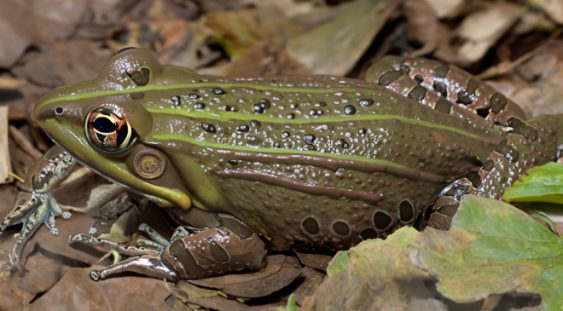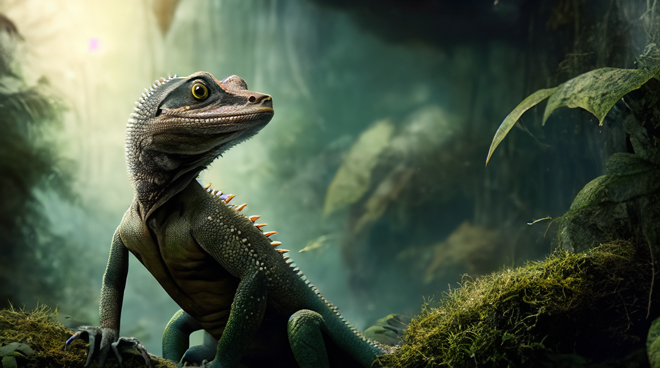Amphibians might be among the first extinted species due to climate change

|
Getting your Trinity Audio player ready...
|
A recent study highlights that climate change poses a significant threat to the survival of more than 40% of amphibian species, including frogs and salamanders, potentially leading to their extinction.
A significant study published in the journal Nature on 4th of October highlights that climate change is increasingly becoming a major threat to frogs and other amphibians. Between 2004 and 2022, rising temperatures have become the leading cause of the decline of over 100 amphibian species, pushing them closer to extinction.
JJ Apodaca, who serves as the executive director of the nonprofit Amphibian and Reptile Conservancy and was not part of the study, described this finding as both alarming and a wake-up call.
It has been well-established that the spread of diseases among frogs and the loss of their natural habitats, such as swamps, have also played significant roles in the decline of many amphibian populations.
Amphibians face a heightened risk because they lack fur or feathers that would typically aid in regulating their temperature and moisture levels in an increasingly hotter and drier environment. However, it’s important to note that a significant number of species are now nearing the brink of extinction due to both disease and the impacts of climate change. Therefore, relying solely on habitat protection measures may not be adequate for reducing these risks. This insight comes from Jennifer Luedtke, an amphibian group coordinator at the International Union for Conservation of Nature and one of the principal authors of the study, which involved more than 100 researchers.
Why is important to care about amphibians lost
According to the report, more than 2 out of every 5 amphibian species are currently facing the risk of extinction, making them the most vulnerable group among vertebrates. 2 out of every 5 amphibian species are currently facing the risk of extinction, in comparison, approximately a quarter of mammals and one-eighth of birds are also under threat of disappearing permanently. Despite their critical role in ecosystems and being high vulnerable group among vertebrates, frogs and other amphibians often receive less attention compared to more well-known groups like birds and mammals, as noted by Kelsey Neam, one of the study’s co-authors.
The potential loss of amphibians is highly concerning because they play a vital role in the food web of ecosystems. They help control insect populations by consuming them and, in turn, serve as a food source for larger predators. Jennifer Luedtke, another co-author of the study, emphasized that the absence of amphibians in this ecological niche could lead to the collapse of the entire food web.
The impact of climate change on amphibians is evident in cases like the coquí frogs in Puerto Rico, which are moving higher up mountains in response to rising temperatures. These iconic frogs are experiencing changes in body size and the pitch of their calls as temperatures increase. However, there may come a point where there is no more suitable habitat on the mountains, potentially leading to their decline. In fact, at least three coquí frog species in Puerto Rico are already presumed extinct.
Another amphibian species affected by climate change is the golden toad of Costa Rica. The hotter and drier conditions in its forest habitat may have made it more susceptible to a lethal fungal disease that affects amphibians’ skin. The last golden toad was spotted in 1989, and the species may now be extinct.
A devastating fungal infection known as chytridiomycosis has also wreaked havoc on amphibian populations across regions, from Latin America to Africa to Australia. This disease has pushed hundreds of amphibian species toward the brink of extinction and is considered one of the most significant threats to biodiversity in the history of wildlife diseases.

There are some bright spots
Despite the numerous challenges faced by frogs, the study determined that salamanders are the most critically endangered type of amphibian. Approximately three out of every five slender amphibians are at risk of disappearing, as indicated in the Nature study.
Salamanders, in particular, are highly vulnerable due to their tendency to inhabit very specific locations, which makes them highly susceptible to the impacts of climate change and habitat fragmentation. For example, the Hickory Nut Gorge green salamander exclusively resides within a 14-mile-long canyon in North Carolina’s Blue Ridge Mountains.
It’s important to emphasize that this issue isn’t confined to tropical regions and has implications for people in the United States as well, as highlighted by JJ Apodaca, who played a role in discovering the salamander species.
The first significant assessment of amphibian declines was conducted in 2004, and this current study draws on data from a recently completed second assessment. Regrettably, the situation has deteriorated further since then, as Apodaca pointed out.
Despite the challenges, there are encouraging signs. Conservation efforts, including habitat protection and other measures, have contributed to the recovery of more than five dozen amphibian species across various regions, ranging from Costa Rica to Malaysia.
Jennifer Luedtke stressed that it’s not all negative news. However, it is crucial to capitalize on this momentum and significantly increase investments in amphibian conservation to address the ongoing crisis effectively.








